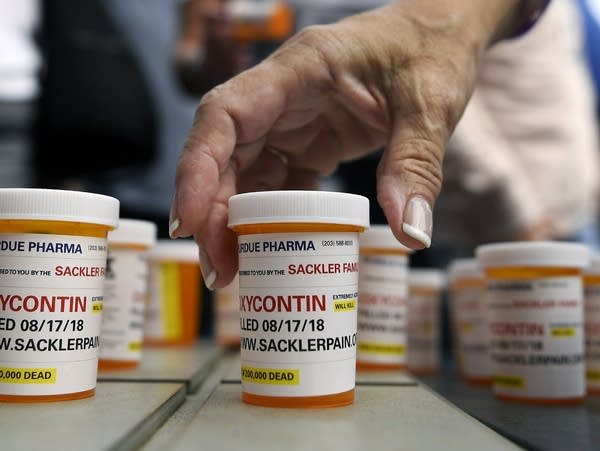Minn. lawmakers pushed to act fast on opioid settlement deal

Family and friends who have lost loved ones to OxyContin and opioid overdoses leave pill bottles in protest in August 2018 outside the headquarters of Purdue Pharma, which is owned by the Sackler family. In Minnesota, state lawmakers could vote soon on a bill paving the way for opioid legal settlement money to begin flowing.
Jessica Hill | AP Photo 2018
Go Deeper.
Create an account or log in to save stories.
Like this?
Thanks for liking this story! We have added it to a list of your favorite stories.


